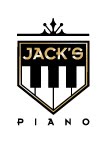What is the “Killer Octave”?
It is the area around the fifth and sixth octave, usually F5 to F6. This is the area where the tone is weak and has short or no sustain. This is a problem in certain pianos due to original design, such as soundboard thickness, strike point, string scale and position of bridge. Although redesign is costly many improvements can be made to the piano.
Most pianists want control over volume and tone, to be able to play soft “softs” and loud “LOUDS”
It is important to have power and sustain across the keyboard, also to be able to blend tenor and bass, and capable of playing soft and loud without distortion. A well designed piano should have a broad dynamic spectrum of sound and tonal characteristics.



